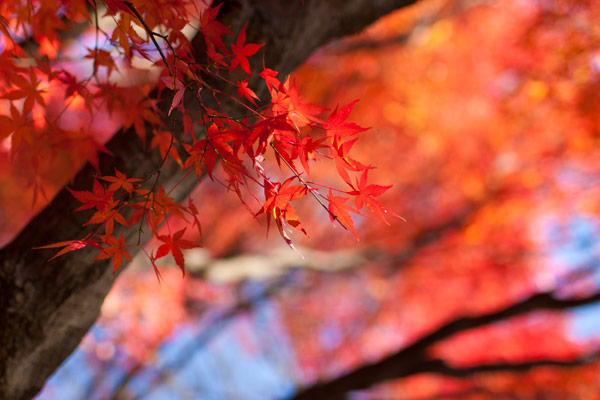Today’s writing exercise comes from my book, 101 Creative Writing Exercises, which takes writers on an exciting journey through different forms and genres while providing writing techniques, practical experience, and inspiration.
Each chapter focuses on a different form or writing concept: freewriting, journaling, memoirs, fiction, storytelling, form poetry, free verse, characters, dialogue, creativity, and article and blog writing are all covered.
Today, we’ll take a peek at “Chapter 7: Form Poetry” with a poetry exercise simply called “Haiku.” Enjoy!
Haiku
Although haiku appears to be one of the simplest poetry forms, it’s actually quite complex. To truly understand haiku, you need to know a little bit about the Japanese language, or more specifically, some key differences between Japanese and English. Also, traditional haiku adhere to a few pretty strict rules regarding form and content.
A haiku consists of seventeen moras or phonetic units. The word mora can loosely be translated as syllable.
A haiku is a seventeen-syllable verse. Traditionally, haiku were written on a single line, but modern haiku occupy three lines of 5-7-5 syllables.
Haiku also use a device called kireji (cutting word). This word breaks the haiku into two parts, which are distinctly different but inherently connected. The kireji is not a concept used in English, so poets writing haiku in English often use punctuation marks instead of kireji, usually a hyphen or ellipses.
The kireji provides structure to the verse and emphasizes imagery used on either side. It may not always be easy to identify the kireji in a haiku, but if you look for a word or punctuation mark that abruptly breaks the train of thought and severs the haiku into two parts, you’ve probably found it.
Another basic element of haiku is the kigo (season word). A true haiku is set in a particular season and is fundamentally concerned with nature. The kigo might be an obvious word like snow (indicating winter) or it could be vague as with a word like leaves (which can be present in any season).
Contemporary Haiku
There is much debate (and some controversy) over what technically qualifies as a haiku. Some poets merely adhere to the 5-7-5 syllabic and line structure and disregard the kireji and kigo elements. Purists insist that a poem is not haiku if it does not meet all of the traditional requirements.
Additionally, many modern poets do not write haiku that exclusively focus on nature. Contemporary haiku explore just about any subject imaginable.
The Exercise
Try your hand at writing a few haiku. For this exercise, focus on writing a poem that is seventeen syllables on three lines with the following meter: 5-7-5.
Tips: The most captivating haiku are quite lovely and use imagery that is almost tangible. Many haiku have an element of surprise or use turns of phrase that are clever, reminiscent of puns.
Variations: Write a few haiku that follow stricter, more traditional rules. These haiku are concerned with nature and include the kireji (cutting word) and kigo (season word).
Applications: Haiku remain popular and can be found in literary and poetry journals. They are also ideal for social media (especially Twitter) and are fun and quick to write. They promote clear, concise writing and can help you cultivate the art of using vivid imagery.
Give it a Try
Feel free to write a haiku and share it in the comments. Don’t forget to pick up a copy of 101 Creative Writing Exercises (aff link), available in paperback and ebook.






Thank you for writing this article about haiku. My name is Terri French–I am the SE Coordinator of the Haiku Society of America. I would just like to say that contemporary English Language haiku no longer has to adhere to the three line 5-7-5 format. Here is a link too a short definition of haiku from The Haiku Society of America website. There is also a wonder webpage called graceguts by Michael Dylan Welch, former president of the HSA. It tells you everything you’d ever need to know about haiku and other Japanese-related forms. : )
Hi Terri. Thanks for stopping by. There is no link in your comment, but I did go to the website for the Haiku Society of America and I could not find a definition for contemporary haiku. I would add that my description of haiku is meant to be universal, which is why I described the original Japanese rules of the form. I would be interested, however, in learning more about how haiku is defined by the Haiku Society of America.
A haiku contest.
Five-Seven-Five ways to say,
Writing Forward Shines!
‘Merican haikus,
Lack kireji and kigo,
Cuz those are real hard
Stubble on the face
you kiss me like a hedgehog
ow, ow, ow, ow, ow
as you can see i have stuck to the 5-7-5 structure and included nature. i love haiku and hope no one is offended by including a little humour. thanks.
A moment it takes
to decide. Every choice has
its repercussions.
Birds sitting huddled
On snow-flecked shrubs and branches
Long to fly sunward.
“Wild.Flower”
Sway like you don’t care
About anything, nothing-
radiant and free.
Fetch me a black rose
She used to bring me, long back.
Now sleeps in her grave.
Thank you for sharing this haiku.
Have pity for me,
my glacial cold outside
hides a warm, warm heart.
Lovely. Thanks for sharing your haiku, Colin.
I just stumbled by your website and see that Terri never got back to you with the HSA definition of haiku. Here is the link:
http://www.hsa-haiku.org/archives/HSA_Definitions_2004.html
Basho in the 17th century wrote 5-7-5 in Japanese but not all Japanese poets currently do. Santoka (1882-1940) is often referred to as Japan’s “free verse haiku” poet, but is a literary descendant of Shiki. Kaneko Tohta (1919-2018) was named a “Person of Cultural Merit” by the Japanese government and many of his haiku do not follow a 5-7-5 pattern and often are on social issues. One of his most famous haiku:
銀行員等朝より螢光す烏賊のごとく 金子兜太
ginkoin-ra asa yori keikō su ika no-gotoku Kaneko Tōta (pub. circa 1955)
into the morning bank clerks glowing fluorescent as squid
Thank you for sharing this information, Deborah.